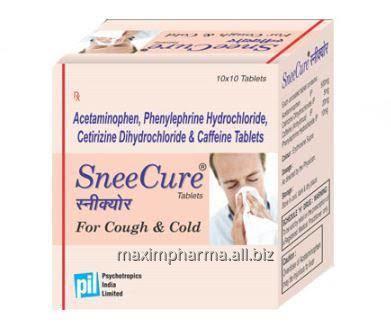Sneecure tablet is a medication that is used to treat a variety of health conditions. It is a combination of two drugs: S-amlodipine and Atenolol. S-amlodipine is a calcium channel blocker, while Atenolol is a beta-blocker. Both of these drugs work together to lower blood pressure, which can help reduce the risk of heart attack, stroke, and other cardiovascular diseases.
In this article, we will explore the various uses of Sneecure tablet and how it can benefit those who take it.
Lowering High Blood Pressure
One of the primary uses of Sneecure tablet is to treat high blood pressure, also known as hypertension. Hypertension is a condition where the force of the blood against the walls of the arteries is consistently too high. This can cause damage to the blood vessels and increase the risk of heart disease and stroke.
Sneecure tablet works by relaxing the blood vessels, which makes it easier for blood to flow through them. This, in turn, lowers the blood pressure. The combination of S-amlodipine and Atenolol in Sneecure tablet helps to reduce both systolic and diastolic blood pressure.
Treating Angina
Angina is a type of chest pain that occurs when the heart doesn’t get enough blood and oxygen. It is usually caused by narrowed or blocked blood vessels in the heart. Sneecure tablet can be used to treat angina by relaxing the blood vessels and reducing the workload on the heart. This helps to increase blood flow to the heart, which can relieve chest pain.
Preventing Heart Attack and Stroke
High blood pressure is a significant risk factor for heart attack and stroke. By lowering blood pressure, Sneecure tablet can help reduce the risk of these conditions. This is especially important for people who have already had a heart attack or stroke, as they are at a higher risk of having another one.
Managing Arrhythmia
Arrhythmia is a condition where the heart beats irregularly or too fast or too slow. Sneecure tablet can help manage arrhythmia by slowing down the heart rate and regulating its rhythm. This can help prevent complications such as blood clots, which can lead to stroke or heart attack.
Other Uses of Sneecure Tablet
In addition to the above, Sneecure tablet can also be used to treat other conditions such as:
- Heart failure: Sneecure tablet can help reduce the workload on the heart and improve its function, making it a useful medication for people with heart failure.
- Migraines: Some studies have shown that Sneecure tablet may help prevent migraines by reducing the frequency and severity of the attacks.
- Anxiety: Atenolol, one of the drugs in Sneecure tablet, is sometimes used to treat anxiety and social phobia.
How to Take Sneecure Tablet
Sneecure tablet should be taken as directed by a healthcare professional. It is usually taken once a day, with or without food. It is important to take the medication at the same time every day to maintain a consistent level of the drug in the body.
The dosage of Sneecure tablet may vary depending on the individual’s condition and other factors such as age, weight, and other medications they may be taking. It is important to follow the prescribed dosage and not to change it without consulting a doctor.
Possible Side Effects
Like all medications, Sneecure tablet can cause side effects. The most common side effects include:
- Dizziness
- Headache
- Fatigue
- Nausea
- Diarrhea
- Constipation
- Swelling in the ankles or feet
In rare cases, Sneecure tablet can cause more severe side effects such as
- Low blood pressure
- Difficulty breathing
- Chest pain
- Irregular heartbeat
- Depression
- Confusion
- Hallucinations
If any of these side effects occur, it is important to seek medical attention immediately.
Precautions and Warnings
Before taking Sneecure tablet, it is important to inform your healthcare provider of any pre-existing medical conditions, allergies, or medications you are taking. Sneecure tablet should not be taken by people who have:
- A known allergy to S-amlodipine, Atenolol, or any other ingredients in Sneecure tablet
- Heart block or other heart conditions
- Low blood pressure
- Liver or kidney disease
- Diabetes
- Asthma or other respiratory conditions
Sneecure tablet should also be used with caution in pregnant or breastfeeding women.
Conclusion
Sneecure tablet is a medication that is used to treat a variety of health conditions, including high blood pressure, angina, heart attack, stroke, arrhythmia, heart failure, migraines, and anxiety. It works by relaxing the blood vessels and reducing the workload on the heart, which can help improve blood flow and reduce the risk of cardiovascular disease.
Like all medications, Sneecure tablet can cause side effects, and it is important to follow the prescribed dosage and seek medical attention if any severe side effects occur. Before taking Sneecure tablet, it is important to inform your healthcare provider of any pre-existing medical conditions or medications you are taking.
If you have any questions or concerns about the use of Sneecure tablet, consult with your healthcare provider for more information.
